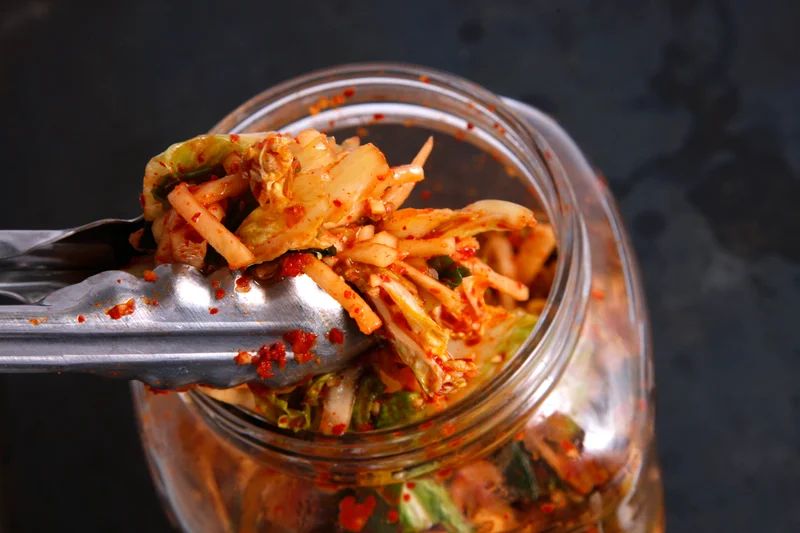Kimchi is a traditional Korean dish of fermented vegetables, the most common of which are napa cabbage and daikon radish (but check out other types of kimchi). In addition to being served as banchan, Korean side dishes presented as part of a meal, it can also be used in a variety of cooked dishes. Try it as a sauce for Brussels sprouts, with braised short ribs, or in Korean tofu soup. The versatility of kimchi makes it great to use in everyday cooking, and the fermentation makes it a powerful probiotic.
Game plan: Kimchi needs time to ferment, so we recommend starting a batch about a week before you plan to use it.
What to buy: Korean red pepper powder or kochukaru is what gives kimchee its spiciness. It can be found in Korean markets in large resealable plastic bags, in different grades of coarseness and spiciness. Choose a grade based on your personal preference.
Also known as saeujeot, Korean salted shrimp are very small, naturally fermented shrimp that impart authentic flavor to kimchi. They are sold in jars and can be found in the refrigerator case of Korean markets.
Special equipment: You will need a clean 2-quart or 2-liter glass jar with a tightfitting lid to hold the kimchi while it ferments. Do not use plastic, as the odors from the kimchi can be hard to remove from plastic.
- Yield: About 1 1/2 quarts
- Difficulty: Easy
- Total: About 25 mins, plus at least 3 1/2 days soaking and fermenting time
Ingredients (11)
- 1 (2-pound) napa cabbage
- 1/2 cup kosher salt
- About 12 cups cold water, plus more as needed
- 8 ounces daikon radish, peeled and cut into 2-inch matchsticks
- 4 medium scallions, ends trimmed, cut into 1-inch pieces (use all parts)
- 1/3 cup Korean red pepper powder
- 1/4 cup fish sauce
- 1/4 cup peeled and minced fresh ginger (from about a 2-ounce piece)
- 1 tablespoon minced garlic cloves (from 6 to 8 medium cloves)
- 2 teaspoons Korean salted shrimp, minced
- 1 1/2 teaspoons granulated sugar
Instructions
- Cut the cabbage in half lengthwise, then crosswise into 2-inch pieces, discarding the root end. Place in a large bowl, sprinkle with the salt, and toss with your hands until the cabbage is coated. Add enough cold water to just cover (about 12 cups), making sure the cabbage is submerged (it’s OK if a few leaves break the surface). Cover with plastic wrap or a baking sheet and let sit at room temperature at least 12 hours and up to 24 hours.
- Place a colander in the sink, drain the cabbage, and rinse with cold water. Gently squeeze out the excess liquid and transfer to a medium bowl; set aside.
- Place the remaining ingredients in a large bowl and stir to combine. Add the cabbage and toss with your hands until evenly combined and the cabbage is thoroughly coated with the mixture. Pack the mixture tightly into a clean 2-quart or 2-liter glass jar with a tightfitting lid and seal the jar. Let sit in a cool, dark place for 24 hours (the mixture may bubble). Open the jar to let the gases escape, then reseal and refrigerate at least 48 hours before eating (kimchi is best after fermenting about 1 week). Refrigerate for up to 1 month.

